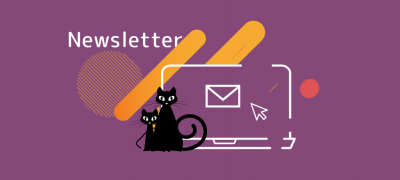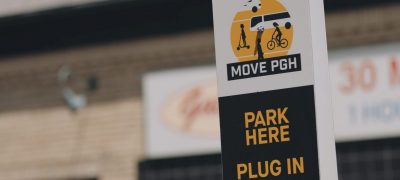
Hello Everyone,
At N-CATT, we find ourselves looking into technologies that were not at all on our radar just a few months ago. What are emerging cleaning technologies, particularly those that are automated? Are you using substances that do not irritate the respiratory systems of transit workers and riders? How can we tell whether these technologies work or, as machines deteriorate, that they continue to work at a sufficient level of performance? Please let us know if you have researched any of these issues and what you have discovered.
We are also watching developments in the Black Lives Matter movement and reading the statements of transit agencies and local governments in response. Transit is both a great equity enabler by providing access to education, work, and health care, but also, in many instances, set up as an insufficient solution for those who are unable to drive or who cannot afford the dominant travel mode of an automobile. While technology certainly has the potential to deliver part of the solution in the form of flexible, person-centered transportation and fare payments, to name just two, we must commit ourselves to increasing the availability of sufficient transit and transportation services so that all of our neighbors have access to every aspect of the American dream. That access should not depend on possession of or ability to operate one particular machine, the automobile.
Stay well and enjoy the start of summer,
Sheryl Gross-Glaser
Editor, N-CATT Tech News
Director, National Center for Applied Transit Technology
Community Transportation Association of America
grossglaser@ctaa.org
202.386.1669
N-CATT Webinars
GTFS Flex
June 17 at 2 p.m. Eastern
GTFS-flex promises a future with online “trip planning” for demand-responsive transportation, similar to the Google Transit feature and other trip planners that exist for fixed-route transportation. But what are the options now and how can I help my riders today? N-CATT’s webinar on GTFS-flex will help you figure out exactly what you need to know about GTFS-flex, and what it offers to your agency.
The webinar will cover GTFS-flex from a variety of angles, so whether you are a small rural transit agency with demand-responsive services, or a state DOT or MPO planner investigating mobility-as-a-service, or a vendor considering GTFS-flex implementation, this webinar will define the players and give concrete advice and next steps to public agencies in particular.
Presenters include Thomas Craig, CEO of Trillium and one of many architects of the GTFS-flex data specification, as well as Caroline Rodier of UC Davis and Jonathan Wade of Denver RTD. Register here.
Mobility as a Service
July 9 at 2 p.m. Eastern
Mobility as a Service (MaaS) – MaaS is the integration of various forms of transportation services into a single mobility service accessible on demand – in general, a one-stop shop to get from point A to point B. MaaS is often touted as a revolutionary solution to optimize passenger transportation convenience primarily in an urban environment. This N-CATT webinar will examine MaaS from the perspective of transportation providers outside of major metropolitan areas. Click here to register.
This webinar will address:
- What is MaaS?
- What is necessary to build a foundation for Maas in rural/small urban areas?
- Funding that is supporting MaaS or steps toward MaaS
- U.S. projects in rural and small urban areas
Speakers:
- Carol Schweiger, President of Schweiger Consulting
- Dwight Mengel, Chief Transportation Planner, Tompkins County, N.Y.
- Dr. Caroline Rodier, Researcher, Institute of Transportation Studies – University of California at Davis.
More Upcoming N-CATT Webinars
- Electric Vehicle Technology for Transit – Aug. 4
- Hydrogen Fuel Cell Technology for Transit – Aug. 18
- Autonomous Vehicle Pilots and Beyond – Sep. 16
Archived Webinars
Open Source Software and Open Data
This webinar provided the definitions of open source software and open data, and explained how they relate to demand-response transportation (DRT), including, but not limited to paratransit, microtransit, human services transportation, ridesourcing (aka ridehailing) taxis, and non-emergency medical transportation (NEMT). Click here for the webinar, PowerPoints, and transcript. (Aired May 21)
Framework for Technology Decisions
This webinar presented a framework for considering and making technology decisions that is broadly applicable to different types of technologies, whether they are incremental or fundamentally new. Even as technology evolves, a framework structure remains useful to account for priorities, goals, and risks. Transit agencies can take the lessons learned during the webinar to begin working through tech decisions they are considering or navigating. Click here for the webinar, PowerPoints, and transcript. (Aired on April 15)
Opportunities
Transit Planning 4 All TP 4All: Funding for Mobility on Demand Solutions
The Community Transportation Association of America (CTAA), with financial support from the U.S. Department of Health and Human Services, Administration for Community Living (ACL) and in collaboration with the Federal Transit Administration (FTA) and national partners, is planning to fund three Mobility on Demand Solution grants with a total federal funding level of up to $300,000 per award for an 18-month period.
The purpose of this funding opportunity is to weave together inclusive transportation planning, development, and implementation with grassroots-driven mobility on demand (MOD) solutions. Selected grantees will work to fully engage people with disabilities, older adults, and caregivers in partnership with transportation, planning, and human services organizations to identify, develop, and implement mobility on demand solutions that respond to local transportation barriers and issues and test a standard way of sharing trip data to support coordination and mobility on demand.
There will be a teleconference to answer questions from interested applicants on June 29. Click here for the RFP and for more details. The deadline for proposals is July 31.
Inclusive Design Challenge
U.S. DOT opened the Inclusive Design Challenge, a competition seeking design solutions to make future automated vehicles more accessible to people with disabilities. They seek innovative design solutions that can enable people with physical, sensory, and cognitive disabilities to use automated vehicles to access jobs, healthcare, and other critical destinations. Proposals are due October 30.
Funding for Public Transportation on Indian Reservations Program
The U.S. Department of Transportation’s Federal Transit Administration (FTA) announced the availability of $5 million in Fiscal Year 2020 competitive grant funding to support transit services for American Indian tribes and Alaska Native villages in rural areas. The deadline for applications is August 24, 2020. FTA’s Tribal Transit Program is authorized by Congress to support public transportation for federally recognized Indian tribes and Alaska Native villages, groups, or communities, as well as to meet the needs of older adults, people with disabilities, and youth in rural areas where transit is sparse. The funding announcement also includes criteria in accordance with the R.O.U.T.E.S initiative.
NCMM One-Call/One-Click Training
NCMM is offering a remote training opportunity on how communities can establish and/or expand existing One-Call/One-Click (OC/OC) systems. OC/OC systems ideally “inform the public about all available transportation options for all populations in a given geographic area, enabling users to gain tailored trip information as well as book and pay for trips.” NCMM is inviting communities who are interested in receiving this training to submit an expression of interest via NCMM’s online form. The deadline to submit this form is June 30. Questions about this opportunity can be submitted to onecall@nc4mm.org until June 17. FAQs will be updated periodically.
Offerings from Fellow Technical Assistance Centers
NCMM One-Call/One-Click Resource Center
The NCMM’s One Call/One Click (OC/OC) Resource Center, developed with Civic Sphere LLC, focuses on various one-call/one-click models and functions. One-call/one-click systems can make the transportation network more inclusive and equitable by incorporating information for user groups, such as those with a disability, older adults, and others with mobility considerations. Aspects of a one-call/one-click system – such as trip information, booking, and payment – are covered at length at the resource center. In-depth case studies of current one-call/one-click systems are provided as well. One-call/one-click systems can also be used as the foundation for developing a Mobility as a Service network and related systems and apps.
NCMM Framework for Technology Advances
NCMM has posted a new resource, the Technology for Mobility Management: A Framework for Moving Forward, which is intended to give mobility managers a framework for understanding, comparing, and evaluating the value of the many different types of technologies available in the public transportation sector.
The typology is organized as a matrix with columns that cover the main technology areas for the industry and with rows that roughly show how much the technology represents the emerging best practices of scalability and platform accessibility. By clicking on each cell in the matrix, will find additional details about each type of technology.
NADTC Coordination Webinar
Brown Bag Webinar, June 25 – This webinar will feature 2019 “Innovations in Accessible Mobility” grantee North Front Range Metropolitan Planning Organization to discuss its grant project, Project Miles: Multi-Provider Coordination in Larimer County, as well as current program efforts that support transportation access for older adults and people with disabilities.
National RTAP ADA Toolkit and Webinar
National RTAP ADA Toolkit Update Webinar, June 30 – The National RTAP ADA Toolkit has just been thoroughly updated with new content, resources, explanations, templates, questions and answers, glossary, and more. The Toolkit gives rural and tribal transit managers an overview of their responsibilities under Americans with Disabilities Act (ADA).
Business Models for Mobile Fare Apps
As smartphones are becoming near-ubiquitous, transit agencies across the country are introducing some form of mobile application and many have decided to utilize apps for fare payment. Business Models for Mobile Fare Apps, is a report from the Transit Cooperative Research Program (TCRP) that focuses on five different business models for mobile fare applications. Transit providers have generally hired outside groups to develop the apps and are featured in the report. There is also information about costs, implementation, and details about how the apps featured operate. Among the interesting findings, most of the transit agencies profiled in the case studies do not have validation systems further than a visual confirmation by the driver/conductor.
Five Mobile Fare App Case Studies
The five business models highlighted in the report are discussed in very practical detail. As apps become more customized and integrated with other fare payment systems, the more expensive they become and the more complicated and time consuming the development process. The report gives an example of each type of business model. The shared app is the most widely used among small and medium size transit agencies. Cost and ease of implementation are its strengths.
- Shared App is a type of app, usually owned by a private company, that is one application used by separate transit agencies across different regions. This one app is premade, so it can launch very quickly, and is usually used by small to medium sized agencies with lower ridership. An example of this is the app used by the Big Blue Bus in Santa Monica, which is made by Token. The app uses its own fare system that is not integrated with other services, but the cost is low, with the company having a small upfront cost and taking an ongoing percentage of sales. Validation for shared apps is usually through visual confirmation. Token represents a large share of this market. A benefit of this app is that it works exactly the same across many different transit agencies, thus enabling an Uber-like app experience for travelers and new residents who have used it elsewhere.
- White Label App is the kind used in Denver’s Regional Transportation District (RTD). This kind of app is developed by a private vendor, but it is made to appear branded and custom built by the transit agency. Usually these apps have small upfront costs and a short time frame to deploy, because the basic app is the same for any agency using it. This app is often not integrated with pre-existing payment systems, and validation is usually done by visual confirmation, but also sometimes through QR codes. Denver’s RTD app is integrated with Uber, because of the vendor’s previous relationship with the ridehailing company.
- White Label App with Validation Hardware is a type of White Label app that is produced by a private vendor, but branded by the transit provider. For this type of app, in contrast to the White Label app described above, the vendor, or often a different vendor, provides validation machines or another form of validation hardware. Because of the hardware, the costs upfront are usually higher. Full fare payment integration is generally limited by the kind of hardware being introduced, however, and often there isn’t full integration. CapMetro in Austin, Texas has a White Label App with validation readers installed along the transit route.
- Open Payment App is a kind of app that enables users to manage their transit accounts and use the app throughout the transportation system, as it is fully integrated. Because of the level of integration, and because this model is still relatively new, the deployment of the app usually is long, the level of customization is variable, and the costs are still high at present. This kind of app is used by the Chicago Transit Authority.
- SDK Only stands for “Standard Development Kit” Only. This is a kit provided by a mobile app vendor, which is basically a set of tools, libraries, and code samples that allow the transit agencies’ developers to create their own apps. This toolbox can be used by agencies of any size, but because it is often built from the ground up, deployment times are often long. The example of this kind app is the one being used by St. Catherine’s Transit in Ontario, which is fully integrated and uses real time info.
These different app systems have various costs and benefits, and tradeoffs. Because they are all still relatively new, rates of rider adoption vary and future iterations are uncertain. But what this report confirms is that there are a lot of ways for a transit agency to introduce and promote mobile fare apps – some at very low cost to the agency – and providing more payment options for customers. The full report can be downloaded here.
Multimodal Fare Payment Integration
Multimodal fare payment integration is growing in popularity among transit systems because, in basic terms, it enables riders to use one payment method to pay for multiple types of services and fare products that transit agencies provide. A Transit Cooperative Research Program (TCRP) report, Multimodal Fare Payment Integration, explains how this technology has been implemented, and the lessons that transit providers have learned from implementing it.
Four Forms of Fare Payment Integration
Fare Integration can take four different forms, according to a partnership of the Secure Technology Alliance and the Association for Commuter Transportation:
- Use of a common payment technology
- Linked or integrated mobile apps
- Common or linked payment accounts
- Incentives or co-marketing
All of these forms work to link different services together and improve the customer experience.
Payment Convergence in the United States
The TCRP report summarizes the results of a survey that shows that even most responding agencies that have adopted some form of electronic fare payment have not achieved complete payment convergence. When discussing their goals for implementing payment convergence, most agencies cited a desire to increase ridership while encouraging incentives for cross-program use, especially by seniors, students, and people with disabilities.
Examples of Fare Payment Integration
The TCRP’s report highlights six examples of agencies implementing payment convergence to different degrees. Also featured as a case study in another TCRP report, Business Models for Mobile Fare Apps, Denver’s Regional Transportation District (RTD) works with Masabi, combining RTD’s options with ridehailing apps such as Uber. By working with a private company, RTD gains the benefit of an existing app while not needing to completely invent a new system.
LAMetro has added an account-based system on top of its card-based system and also has integrated its bikesharing program. Furthermore, LAMetro has accommodated cash services to ensure that unbanked riders will be able to take advantage of the fare payment system. The Port Authority of Allegheny County has worked with a private company to create ConnectCard, which has been integrated with bikesharing systems.
Rural and Small Urban Transit
Not all of the survey responders experienced success. The Bi-State Development Agency, serving parts of Illinois and Missouri, has a trip-planning transit app with limited integration. Metro Transit is the agency in this area. This case study demonstrates the difficulties that medium-sized agencies face when it comes to serving areas with low population density and limited internet accessibility.
The main issue for any fare payment solution is that Metro Transit serves a large rural and suburban area with many unbanked customers. Ensuring accessibility and equity for the unbanked makes it difficult to move away entirely from cash as a payment option.
Government Commitment Helps
Two other case studies are examples from outside the US and they demonstrate why leadership and collaboration are critical. The first is the city Antwerp, Belgium, where the local government took an active role in creating a payment convergence system throughout the city. The other is Translinks, a nationwide ticketing system in use throughout the Netherlands. Both of these are examples of near-fully integrated payment systems, demonstrating what a high level of support and commitment to creating a system of payment integration can do for a transit agency.
Fast-Evolving Technology and Cultural Divides
Whatever technology adoption was planned yesterday and procured today may become outdated by tomorrow. Because of rapidly changing technology, agencies face challenges when it comes to building an infrastructure for payment integration, or even maintaining an integrated payment model. Agencies are now moving away from card-based systems to cloud-based customer accounts, but these cloud-based systems present issues of privacy and data collection, although collecting and analyzing passenger data is vital to a transit agency’s continued success.
Working with private companies can also cause problems for transit agencies, especially smaller ones that may lack knowledge of the technological landscape. The lack of standard business models across agencies and private companies can spur confusion and dissatisfaction. However, these challenges are often seen as small when compared to the potential that a multimodal fare payment integration system can have on a transit system. As time passes, it is likely that multimodal fare payment integration, like transit apps, will become more standardized, with less expensive and less customized options available.
Off the Tech Topic – Using Federal Funds for Local Match
Technology acquisition, planning, and implementation all require funding, so even though this resource about federal fund braiding is not itself about technology, it is otherwise quite important to N-CATT’s rural, tribal, and small urban audience. Federal fund braiding for local match (hereinafter referred to as federal fund braiding), is defined as using funds from one federal program to meet the match requirements of another. Section 200.306(b) of Title 2, Code of Federal Regulations, prohibits federal fund braiding for local match “except where the federal statute authorizing a program specifically provides that federal funds made available for such program can be applied to matching or cost sharing requirements of other federal programs.”
Braiding Is About Funding, Not Hair
The Coordinating Council on Access and Mobility (CCAM) recently published a CCAM Federal Fund Braiding Guide to explain what braiding is and where it is permitted.
CCAM conducted Program Analysis Working Sessions with federal CCAM sub-agencies to clarify and document which federal programs’ statutes expressly provide authorization for fund braiding. Participating sub-agencies were from the Department of Transportation (DOT), the Department of Justice (DOJ), the Department of Health and Human Services (HHS), the Department of Agriculture (USDA), and the Department of Veterans Affairs (VA). In total, 61 programs were examined out of a total of the 130 federal programs for which transportation for particular populations is an eligible expense, in particular human service transportation for people with disabilities, older adults, and/or individuals of low income.
The chart provided in the guide about the 61 federal programs examined is an excellent resource that offers pertinent and quick information.
Related Links
N-CATT Meows on Twitter
Find N-CATT meows at @TransitNCATT.
- Wireless Advanced Vehicle Electrification (WAVE) installed a wireless charging system at Josephine Community Transit’s (Josephine) maintenance depot in Grants Pass, Ore. #electricbus
- $1.9M in funding is going to @Laketran to purchase a new #ElectricBus and new charging stations, allowing their fixed-route buses to run with #ZeroEmissions
- #Jacksonville Transit Authority adds univ. partner; plans “low-speed AV circulators at specific locations where there is a unique transportation need, while fulfilling a core principle of connecting people with emerging technologies.” #autonomousvehicle
- Launching this month, a CVS partnership with @nurobots for #AutonomousVehicles to deliver in several Houston neighborhoods. Will start with Toyota Prius vehicles and shift to custom-built AV. FAA has issued waivers for #drone deliveries on 2 routes.
- Possibility for #transit stations? #SouthKorea robots clean, take temperatures, offer hand sanitizer and remind people to practice #socialdistancing and to wear masks.
- Read Carol Schweiger’s well-organized guide to FTA’s IMI grants. She offers both general information and details about 3 projects of particular interest for #MaaS, #automatedvehicles, fare payment integration, and #BRT. #pwd #transit
- Technology is playing a part in updating #transit cleaning and disinfection solutions.
- Michigan has contracted with five tech companies to help address the challenges to mobility caused by COVID-19, including using #AV delivery systems, vehicle partitions, and disinfecting robots.
Videos of the Month
Fare Free’s Full Potential Not Automatic
In light of temporary COVID-19-related fare-free transit throughout the US, here is a video, The Country Where All Public Transit Is Free, that is not at all a promotional piece in favor of fare-free service, but rather an examination of what elements contribute to popular transit systems and how the elimination of fares can fit in. Even free service, it turns out, does not guarantee increased ridership on its own.
Cat Celeb Makes a Musician Famous
N-CATT cannot resist a cat celebrity, so here is a street cat named Bob, who became a star once he adopted a street musician. Bob dons colorful knitted scarves and he can do an impressive hi-five. Bob’s partnership with the musician has made his human soulmate famous and has led to multiple books, the first of which sold over a million copies in the United Kingdom alone.



